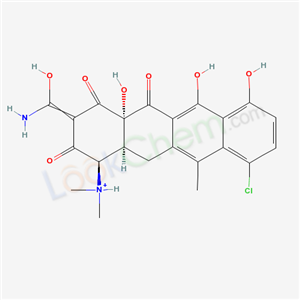Tetracycline drugs
Tetracyclines are basic broad-spectrum antibiotics produced by or semi-synthetic refined of the Streptomyces. Antibacterial spectrum includes Gram-positive and Gram-negative bacteria, such as Streptococcus pyogenes, Streptococcus viridans, pneumococcus, enterococcus, Staphylococcus aureus, Clostridium, Bacillus anthracis, Escherichia coli, Shigella, Salmonella, Yersinia pestis, Brucella, meningococcal, Neisseria gonorrhoeae, mycoplasma, chlamydia, spirochete, rickettsia and so on. As a result of long-term extensive applications, the resistance of this class of drugs is becoming serious after 1960s, so the use of this class of drugs has been limited. At present, tetracycline drugs are mainly used for rickettsia, chlamydia, mycoplasma and the treatment of the respiratory tract, biliary tract, urethra, skin and soft tissue infections which are caused by brucellosis, as well as hot spirochete, and susceptible strains. There is a close cross-resistance between the drugs.
Adverse reactions of this class of drugs are the following.
1. Liver and kidney damage. There is no adverse reaction in the normal dose, while the high-dose and long-term application may elevate the concentration of liver jaundice transaminase, and lead to hepatic coma, even death, as well as increase the kidney-induced blood urea nitrogen and creatinine values.
2. Nausea, vomiting, abdominal pain and diarrhea. When bedridden patients take the drug, for it cannot reach the stomach quickly, the retention in the esophagus will stimulate the production of esophageal ulcers. So these patients should drink plenty of water, and try to take it when they are sit on a chair.
3. The retard of teeth and bone development. The drug can be deposited in the teeth and bones, causing dental yellow dye, affecting the normal development of bone in infants and young children, and the drug can easily get through the placenta and get into the milk. So pregnant women, lactating women and children under 8 years old should disable this drug.
4. Dysbacteriosis, more common. The light will cause vitamin deficiency, while more serious, the adverse reactions is the second infection caused by Candida albicans and drug-resistant strains.
5. Rash, urticaria, photosensitive dermatitis, asthma and other skin allergies, as well as local irritation due to injection. This class of drugs cannot be intramuscular. The drugs should be diluted (<1%) and accompanied with a slow administration when applied with intravenous infusion.
6. This class of drugs should avoid the coadministration of antacids, calcium salts, iron salts, magnesium salts and aluminum, bismuth and other drugs, so as not to affect the absorption of tetracycline drugs (including milk). At the same time, as it impacts the intestinal flora, this drug will block the intestinal circulation of steroidal contraceptives, as well as prevent contraceptive effect, so these effects is necessary to be noted.
- Structure
- Product name
- CAS No.
- Molecular formula
- Inquiry
-
![2-Naphthacenecarboxamide, 4-(dimethylamino)-1,4,4a,5,5a,6,11,12a-octahydro-3,5,10,12,12a-pentahydroxy-6-methyl-1,11-dioxo-, calcium salt (1:2), [4S-(4alpha,4aalpha,5alpha,5aalpha,6alpha,12aalpha)]-](//www.lookchem.com/300w/2010/0625/94088-85-4.jpg)
-
2-Naphthacenecarboxamide, 4-(dimethylamino)-1,4,4a,5,5a,6,11,12a-octahydro-3,5,10,12,12a-pentahydroxy-6-methyl-1,11-dioxo-, calcium salt (1:2), [4S-(4alpha,4aalpha,5alpha,5aalpha,6alpha,12aalpha)]-
- 94088-85-4
- C22H24 N2 O8 . 2 Ca
- inquiry
Total:30 Page 1 of 1 1
